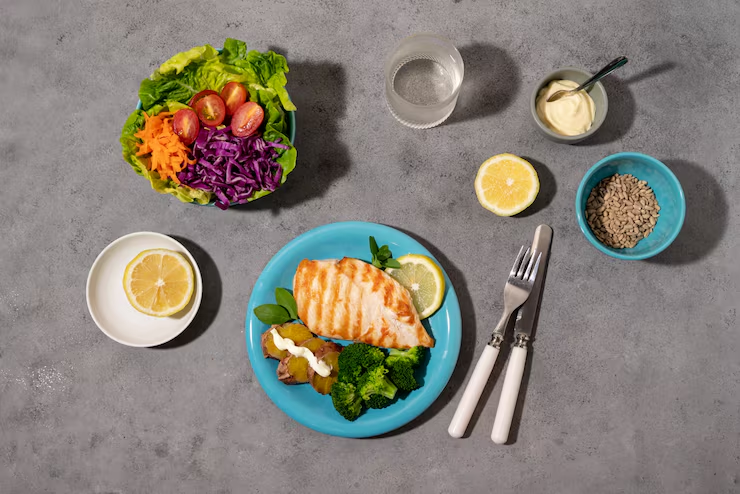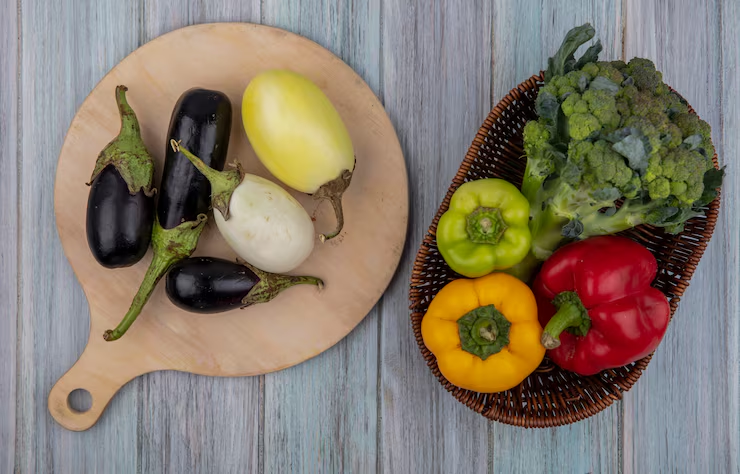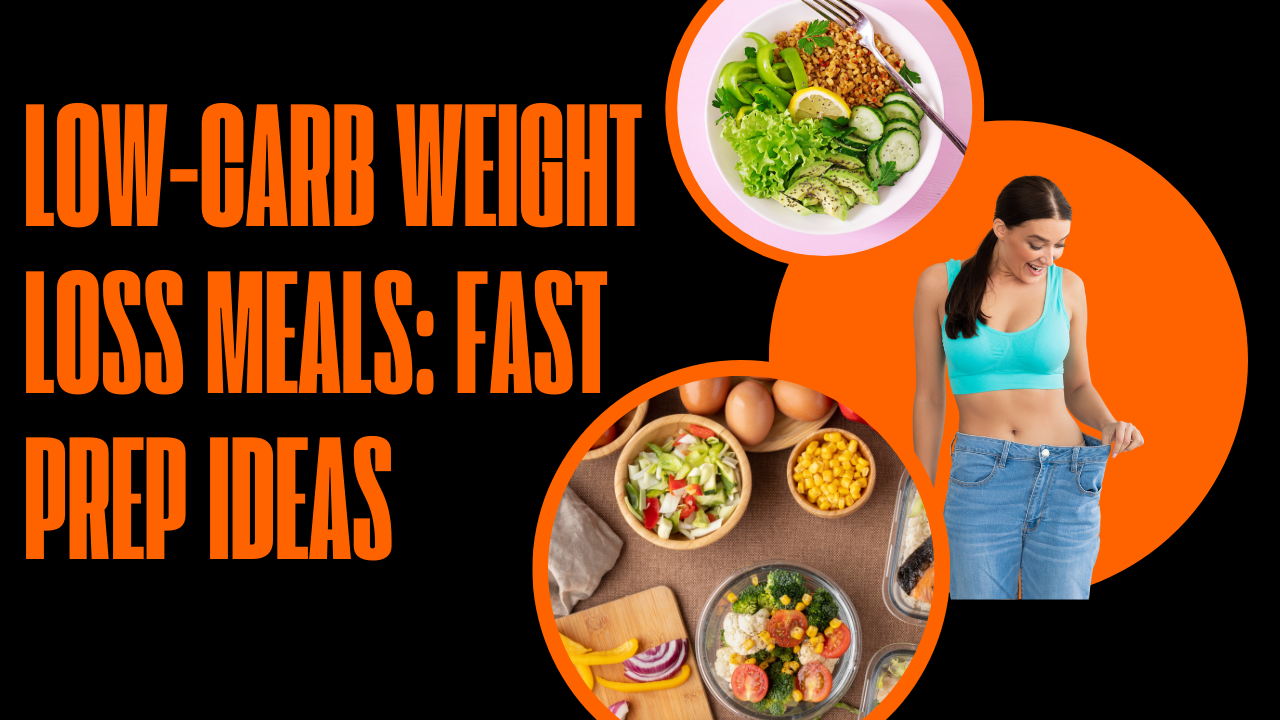Low-carb weight loss meals have become one of the most effective strategies for shedding pounds, improving energy, and boosting metabolic health. By reducing carbohydrate intake and focusing on proteins, healthy fats, and fiber-rich vegetables, these meals help stabilize blood sugar levels, reduce cravings, and promote fat burning. This approach not only supports weight loss but also enhances overall well-being by preventing energy crashes and mood swings.
The key to success with low-carb weight loss meals lies in planning balanced, nutrient-dense options. Choosing whole foods such as lean meats, eggs, leafy greens, nuts, and seeds ensures your body receives essential nutrients while keeping carb intake in check. Portion control and meal variety are equally important to avoid boredom and nutrient deficiencies.
With the right strategies, low-carb weight loss meals can be both satisfying and sustainable. Combining proper meal planning, hydration, and regular exercise creates a long-term path to healthy weight management and improved metabolic health.

What Are Low-Carb Weight Loss Meals?
Low-carb weight loss meals are designed to limit carbohydrate intake, especially refined carbs such as white bread, pasta, and sugary snacks. By reducing these high-carb foods, the body begins to burn stored fat for energy instead of relying on glucose. This shift supports fat loss, stabilizes blood sugar levels, and helps control cravings, making weight management more effective.
Instead of processed carbs, low-carb weight loss meals emphasize proteins, healthy fats, and fiber-rich vegetables. Foods like grilled chicken with roasted vegetables, salmon with avocado salad, or eggs with spinach and cheese provide balanced nutrition while keeping carb intake low. These meals are naturally filling and help maintain steady energy throughout the day.
Incorporating low-carb weight loss meals into your daily routine promotes better metabolic health and long-term results. With proper planning, you can enjoy delicious, satisfying dishes that support fat burning, preserve lean muscle, and improve overall well-being without feeling deprived.
The goal is to encourage your body to burn stored fat for energy rather than relying on glucose from carbs. Low-carb meals stabilize blood sugar levels, reduce insulin spikes, and enhance satiety, which naturally helps control calorie intake.
Benefits of Low-Carb Weight Loss Meals
Fat Loss: By lowering carb intake, your body shifts to fat-burning mode, accelerating weight loss.
Reduced Cravings: High protein and fiber content in low-carb meals help curb appetite.
Stable Energy Levels: Avoiding carb spikes prevents energy crashes and mood swings.
Better Metabolic Health: Low-carb meals improve insulin sensitivity, reducing the risk of type 2 diabetes.
Supports Muscle Retention: Adequate protein helps preserve lean muscle while losing fat.
How to Plan Low-Carb Weight Loss Meals
Planning Low-carb weight loss meals begins with choosing the right balance of proteins, healthy fats, and fiber-rich vegetables. Start by reducing refined carbs such as bread, pasta, and sugary foods while increasing lean proteins like chicken, eggs, fish, and tofu. These foods help control hunger and maintain muscle while promoting fat burning.
Next, fill your plate with non-starchy vegetables like broccoli, spinach, zucchini, and kale. These nutrient-dense veggies add volume and fiber, keeping you satisfied without excess calories. Pair them with healthy fats such as avocado, olive oil, or nuts to enhance flavor and provide lasting energy.
Meal prepping is another key strategy for effective Low-carb weight loss meals. Preparing ingredients in advance—like boiled eggs, grilled chicken, or chopped vegetables—saves time and prevents last-minute high-carb choices. Portion meals into containers for quick access during busy days.
Finally, track your progress by logging meals and carb intake. Monitoring your plan ensures you stay consistent, make adjustments when needed, and achieve long-term weight loss while enjoying delicious low-carb dishes.
Planning is critical for success. Start by:
Replacing high-carb staples with vegetables, proteins, and healthy fats.
Including a variety of nutrient-dense foods to avoid deficiencies.
Using herbs and spices for flavor without adding carbs.
Meal prepping to prevent impulsive high-carb eating.
Balanced low-carb meals should ideally include:
Protein: Eggs, chicken, turkey, fish, tofu, or tempeh.
Healthy Fats: Avocado, olive oil, nuts, seeds, and fatty fish.
Low-Carb Vegetables: Spinach, zucchini, broccoli, cauliflower, peppers.
Why Choose Low-Carb Weight Loss Meals
Choosing Low-carb weight loss meals is one of the most effective ways to shed excess fat while improving overall health. Reducing carbohydrate intake lowers insulin levels, which encourages the body to burn stored fat for energy instead of relying on glucose. This natural fat-burning process supports steady weight loss without the extreme hunger often associated with other diets.
Another reason to follow Low-carb weight loss meals is their ability to stabilize blood sugar and control cravings. By focusing on proteins, healthy fats, and fiber-rich vegetables, you stay full for longer periods and avoid energy crashes. This makes it easier to maintain a calorie deficit while still enjoying satisfying, nutrient-dense meals every day.
Low-carb weight loss meals also promote long-term wellness beyond weight management. They can help reduce inflammation, improve heart health, and enhance mental clarity. This approach not only supports fat loss but also provides sustainable benefits for energy and overall vitality.
When to Start Low-Carb Weight Loss Meals
The best time to begin Low-carb weight loss meals is when you are ready to commit to a healthier eating plan that reduces processed carbs and focuses on whole, nutrient-dense foods. Starting after a period of high-carb eating or frequent sugar cravings can help reset your metabolism and encourage your body to burn fat for fuel instead of relying on glucose. This transition is especially beneficial if you’re seeking steady, sustainable weight loss.
Implementing Low-carb weight loss meals works well when paired with lifestyle changes such as regular exercise and mindful eating. Beginning at the start of a new week, after a health checkup, or during a personal goal-setting period makes it easier to track progress and stay motivated. Planning ahead ensures a smooth adjustment to lower carb intake.
You can also adopt Low-carb weight loss meals during plateaus or times of low energy to jumpstart fat burning, stabilize blood sugar, and regain control over cravings for long-term success.
Top Tips for Low-Carb Weight Loss Meals
Prioritize Protein in Every Meal
Protein is a key component of successful Low-carb weight loss meals because it helps you feel fuller for longer while preserving lean muscle mass. High-protein foods like eggs, chicken, turkey, fish, and lean beef provide essential amino acids that repair tissues and support metabolism.
Including protein in every meal also triggers thermogenesis, a process where the body burns more calories to digest and absorb nutrients. This natural calorie-burning effect makes protein-rich meals more efficient for fat loss compared to carb-heavy options.
A great example is grilled salmon with sautéed spinach and cherry tomatoes, which combines protein, healthy fats, and fiber. This balance stabilizes blood sugar levels, preventing energy crashes and sugar cravings. By prioritizing protein, you can maintain muscle, feel satisfied between meals, and accelerate fat loss while keeping carb intake low.
Example Meal: Grilled salmon with sautéed spinach and cherry tomatoes.
Focus on Non-Starchy Vegetables
Non-starchy vegetables form the foundation of effective Low-carb weight loss meals because they are naturally low in carbohydrates and calories but rich in fiber, vitamins, and minerals. Vegetables like broccoli, zucchini, asparagus, kale, and spinach add volume to meals, helping you stay full without consuming excess calories.
Their high fiber content slows digestion, balances blood sugar, and supports healthy gut function, all of which are essential for long-term weight management. Eating a variety of colorful vegetables ensures you receive a wide range of antioxidants to reduce inflammation and boost overall health.
For a satisfying low-carb dish, try stir-fried tofu with broccoli, mushrooms, and bell peppers. This combination provides plant-based protein, fiber, and micronutrients to keep hunger at bay while promoting steady energy levels throughout the day.
Example Meal: Stir-fried tofu with broccoli, mushrooms, and bell peppers.
Include Healthy Fats
Healthy fats are a crucial component of balanced Low-carb weight loss meals, providing satiety, energy, and essential fatty acids for brain and hormone health. Sources like avocado, olive oil, coconut oil, nuts, and seeds help you feel satisfied, reducing the urge to snack on high-carb foods.
Unlike processed fats, these healthy options support metabolism and keep blood sugar stable, preventing cravings and energy crashes. When combined with proteins and vegetables, healthy fats slow digestion, ensuring you stay full for hours while promoting steady fat burning.
A nutrient-packed example is an avocado and spinach salad with grilled chicken and olive oil dressing. This meal delivers a perfect balance of protein, fiber, and fats to enhance flavor, maintain energy, and support sustainable weight loss goals.
Example Meal: Avocado and spinach salad with grilled chicken and olive oil dressing.
Limit Processed Carbs
One of the most important rules for successful Low-carb weight loss meals is avoiding processed carbohydrates. Foods like white bread, pasta, pastries, and sugary drinks spike blood sugar levels, leading to cravings and fat storage. Reducing these carbs improves insulin sensitivity and supports fat burning.
Instead, focus on natural carb sources like leafy greens, berries, or small portions of legumes when needed. These whole-food carbs provide fiber, vitamins, and antioxidants without triggering hunger or energy crashes.
A great low-carb example is baked cod served with roasted cauliflower and green beans. This meal satisfies cravings for comfort food while keeping carb intake minimal, allowing your body to burn fat more efficiently and maintain steady energy throughout the day.
Example Meal: Baked cod with roasted cauliflower and a side of green beans.
Practice Meal Prepping
Preparing low-carb meals in advance prevents impulsive carb-heavy choices. Pre-cut vegetables, portion proteins, and store them in containers for quick access. Meal prepping also makes it easier to stick to calorie goals.
Planning ahead is essential to make Low-carb weight loss meals sustainable. Meal prepping saves time, reduces stress, and prevents impulsive high-carb choices. Preparing proteins, vegetables, and snacks in advance ensures you always have healthy options ready to eat.
Batch cooking items like chicken, fish, or boiled eggs for three to four days allows you to quickly assemble meals with fresh vegetables and healthy fats. This routine helps you control portion sizes and stick to your calorie and carb goals effortlessly.
For example, you can prep grilled chicken, steamed broccoli, and avocado dressing in advance. Store them in portioned containers to create balanced, low-carb lunches that support weight loss even on busy days.
Example Tip: Cook chicken, fish, or eggs for 3–4 days ahead, and pair with fresh vegetables when needed.
Stay Hydrated
Sometimes thirst is mistaken for hunger. Drinking water before meals can help control portion sizes. Herbal teas and sparkling water are also good options. Hydration supports metabolism and reduces bloating while following a low-carb diet.
Hydration plays a vital role in the success of Low-carb weight loss meals. Drinking plenty of water supports metabolism, reduces bloating, and helps regulate appetite. Often, thirst can be mistaken for hunger, leading to unnecessary snacking.
Aim to drink water before meals to improve portion control and maintain energy levels. Herbal teas, sparkling water, or infused water with lemon or cucumber are excellent low-carb beverage options that keep hydration enjoyable.
Consistent hydration helps the body flush out toxins, supports digestion, and enhances fat-burning efficiency. Pairing this habit with nutrient-rich, low-carb meals ensures steady energy and optimal weight loss results.
Snack Smart
Low-carb snacks curb hunger without derailing weight loss. Options include:
Nuts and seeds
Cheese sticks
Boiled eggs
Greek yogurt (unsweetened)
Veggie sticks with hummus
Snacking on protein or fiber-rich foods prevents overeating at meals and maintains steady energy levels.
Track Your Progress
Monitoring weight, energy levels, and carb intake ensures your low-carb meal plan is effective. Use a food diary or app to track meals and make adjustments as needed. Progress tracking helps you stay accountable and motivated.
Snacking wisely is key when following Low-carb weight loss meals, as it prevents hunger spikes and keeps energy levels stable between meals. Choosing snacks high in protein, fiber, and healthy fats ensures satiety without excess carbs.
Great options include nuts and seeds, cheese sticks, boiled eggs, unsweetened Greek yogurt, or veggie sticks with hummus. These snacks stabilize blood sugar and prevent overeating at main meals.
For example, a handful of almonds with cucumber slices provides crunch, nutrients, and healthy fats. Incorporating smart snacks helps maintain your low-carb lifestyle while keeping cravings under control.
Sample Low-Carb Weight Loss Meal Plan
| Meal | Menu |
|---|---|
| Breakfast | Scrambled eggs with spinach and avocado |
| Snack 1 | Handful of almonds and cucumber slices |
| Lunch | Grilled chicken salad with olive oil dressing and mixed greens |
| Snack 2 | Greek yogurt with chia seeds |
| Dinner | Baked salmon with roasted broccoli and zucchini |
| Optional Dessert | Fresh berries with a sprinkle of nuts |
Benefits Beyond Weight Loss
Low-carb meals not only help shed pounds but also:
Improve heart health by reducing triglycerides
Lower blood sugar and insulin levels
Enhance mental clarity and energy
Reduce inflammation
This makes low-carb eating a holistic approach to long-term health, not just weight loss.
Conclusion
Low-carb weight loss meals are a powerful strategy for reducing fat, increasing energy, and promoting overall health. By focusing on proteins, fiber, and healthy fats while cutting refined carbs, these meals stabilize blood sugar levels and reduce hunger cravings. This balance encourages the body to burn stored fat for fuel, making weight loss more effective and sustainable.
The key to successful low-carb weight loss meals is careful planning and smart ingredient choices. Lean proteins like chicken, fish, or eggs, combined with non-starchy vegetables such as spinach, broccoli, and zucchini, provide essential nutrients without excess carbohydrates. Adding healthy fats like avocado, olive oil, or nuts enhances satiety and flavor, keeping meals satisfying and nutrient-rich.
Incorporating meal prepping, mindful snacking, and proper hydration ensures long-term success. Preparing low-carb ingredients ahead of time, choosing protein-rich snacks, and drinking plenty of water support steady energy and consistent fat loss, making low-carb weight loss meals an enjoyable lifestyle choice.
Following these top 8 tips ensures your low-carb meals are effective, sustainable, and enjoyable. Pair this approach with regular exercise and a balanced lifestyle to achieve long-term success. With thoughtful planning, low-carb meals can be delicious, nutritious, and a cornerstone of your weight loss journey.
FAQs
1. What are the best foods for low-carb weight loss meals?
The best foods include lean proteins (chicken, fish, eggs, tofu), low-carb vegetables (spinach, broccoli, zucchini), healthy fats (avocado, olive oil, nuts), and small portions of berries for natural sweetness.
2. How many carbs should I eat per day to lose weight?
For weight loss, most low-carb plans recommend 50–100 grams of net carbs per day, though some strict plans (like keto) may limit carbs to under 30 grams. Your ideal intake depends on activity level and health goals.
3. Can I eat fruit on a low-carb diet?
Yes, but choose low-sugar fruits like berries, kiwi, and watermelon in moderation. Avoid high-carb fruits such as bananas, grapes, and mangoes if you’re aiming for strict carb control.
4. Are low-carb meals safe for everyone?
Low-carb meals are generally safe for healthy adults, but people with medical conditions such as diabetes, kidney disease, or heart issues should consult a doctor before making major dietary changes.
5. Do low-carb meals help with belly fat?
Yes, low-carb diets reduce insulin levels, which promotes fat burning, including visceral belly fat. Combined with regular exercise, they can significantly improve body composition over time.

